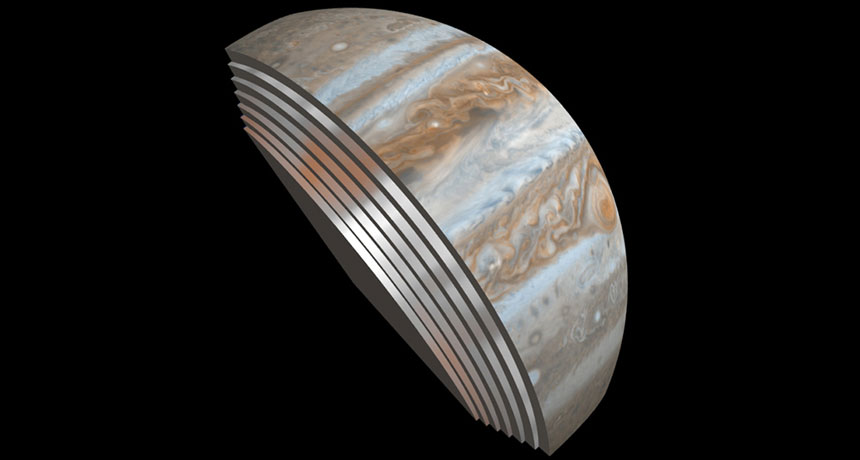First peek under clouds reveals Jupiter’s surprising depths
Colorful bands stretch hundreds of kilometers inward, Juno spacecraft data show

DEEP DIVE Cloud bands seen on Jupiter extend hundreds of kilometers down into the atmosphere, as seen in this depiction of data obtained by the Juno spacecraft.
JPL-Caltech/NASA, SWRI, GSFC/NASA







